Sorted by date Results 1 - 14 of 14
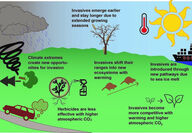
Climate change refers to a change in a climate system that persists for long periods of time, irrespective of the cause. Montana has such an interesting history of environmental changes over the years. At one time western Montana lay beneath a lake approximately 2,000 feet deep. Ice dams 4,000 feet tall that blocked the Clark Fork River burst causing the 3,000 square mile Glacial Lake Missoula to drain in less than a week into the Pacific Ocean. Much of the rock formations and other geology we...
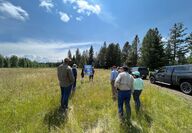
During the 2017 legislative session, the Montana Wildlife Habitat Improvement Act (WHIP) was passed into law. The act made federal Pittman-Robertson Wildlife Restoration funds available to restore priority wildlife habitats by managing noxious weeds. Priorities for funding include landscape-scale projects lands that are open to public hunting and involve priority wildlife habitats, noxious weed infestations that directly impact habitat functions, broad partnerships involving multiple...
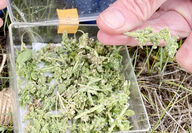
When I started my job as the weed management projects coordinator for the Powell County Weed Board several years ago, I inherited a project that began with my predecessor in cooperation with the (now defunct) MSU Sheep Institute. This project involved importing sheep to prescriptively graze with cattle across several contiguous livestock operations in the Deer Lodge valley, primarily targeting the noxious weed leafy spurge. Data collected by the coordinator(s), extension agents and cooperators...
Though we live dramatically different lifestyles, my oldest sister who resides in a subdivision in a north Texas city and I, the Montana “country living” member of our family, share a love of bees and an appreciation for pollinators. I think this mutual admiration may have originated with our love of gardening, which probably started with our grandparents. Our maternal grandfather had an annual competition for largest tomato with his next-door neighbor (who was also our uncle). Our paternal grandmother grew beautiful ornamental flower gar...

Although anyone who knows me knows that I'm a "certifiable" botany and native plants nerd, I love everything nature. In particular, I share a love of birds with one of my sisters. On a trip together one October, we went to a wild bird rescue facility (Vermont Institute of Natural Science) to attend one program, and ended up staying all day, much to our mutual delight. We often send each other articles, pictures, and messages about birds back and forth from our homes in Montana and...
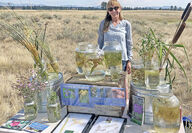
The mission of the Blackfoot Challenge is "to coordinate efforts to conserve and enhance natural resources and the rural way of life in the Blackfoot watershed for present and future generations." A long history of poor mining, logging and livestock grazing practices as well as increased recreational use led to invasive weed spread across fence lines and ownership boundaries. The Blackfoot Challenge officially formed in 1993 as private landowners and public agencies recognized the need for a...
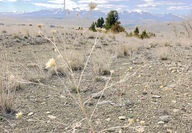
The past few weeks I have been making a concerted effort to take daily walks on the ranch where I live. Last week the snowy path I wandered gave way to a spring melt off event. By mid-week I sighted my first wildflower blossoms. Yet even before the snow cleared, I had begun to see spotted knapweed rosettes emerging at the base of last year's seed heads as well as scattered seedlings. With temperatures reaching the mid to upper 60's, I started to experience an increase in questions about weed man...
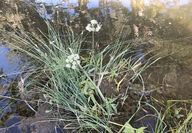
I have received several calls about plants that have either just shown up or have increased in density and distribution with the additional precipitation we have received in many parts of Powell County this summer. Two such plants are poison hemlock and Western water hemlock. Ingestion of either by humans or livestock can result in illness or death. Poison hemlock, the most toxic of the two, was used to create the potion Socrates was forced to drink in 329 B.C. Some Native American tribes have...
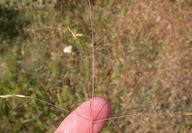
Noxious weeds have destructive impacts on Montana's landscape including displacing native plant species, increasing soil erosion and decreasing wildlife habitat and recreational opportunities. Rangeland, pastureland, cropland, forests and wildlands comprise 92 million acres, or 98 percent of the total land area, in Montana. Both new and continued infestations of these non-native species not only reduce the productivity of cropland and rangeland, but infestations of noxious weeds also negatively...
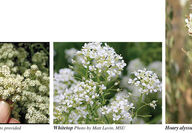
While the unusually wet spring was beneficial to native and desirable grasses and wildflowers, many weed species took advantage of the excellent growing conditions as well. Annual mustards with yellow blossoms were abundant this spring and early summer. While "weedy" and too many "obnoxious", these plants are not regulated by the Montana Department of Agriculture, or "noxious". Three weed species that are regulated and required by law to control are perennial pepperweed, whitetop and hoary...
The effects of wildfires on plants will vary, depending upon fire intensity and specific plant characteristics. Many plant species will survive and reinitiate growth soon after a fire. However, the ability of desirable plants to reestablish, reseed and flourish in subsequent years can be impaired if noxious weeds are inadequately managed. Preventing weeds from spreading through seed dispersal is the most effective and least costly method of weed management. Survey burned areas to eradicate new weeds, concentrating on areas where weed...
Weed management is highly impacted by high temperatures combined with low and variable precipitation. Hot weather and drought affect the germination, growth, hardiness and competitive ability of both desirable plants and weeds. Many weeds, once established, need very little water to survive. Perennial weed species such as spotted knapweed, field bindweed and Canada thistle have extensive, deep root systems and are able to “mine” water. Perennial weeds and other plants also have the ability to establish a dormant state for some time during wat...
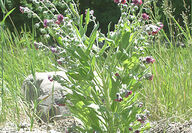
Houndstongue, a plant native to Western Europe to central Asia, is highly invasive in character outside of its native range. Present throughout much of North America and now a common rangeland, pasture, forestland and riparian area weed across Montana, houndstongue was likely first introduced as a contaminant in cereal seed. Houndstongue spreads locally by seed attached to the hide, hooves and paws of wildlife, livestock and other domesticated animals as well as on just about anything...
The State of Montana updated the Montana State Noxious Weed List to include three new plants, and shifted the priority of three weeds on the previous list, effective July, 2015. The updated list provides management priorities for citizens, land managers, county weed boards, county weed board coordinators, weed districts and other vegetation managers. “Noxious” weeds is a designation given to invasive plants that have been determined to have the potential to, or have actual, detrimental impacts on Montana’s environment and economy. Propa...